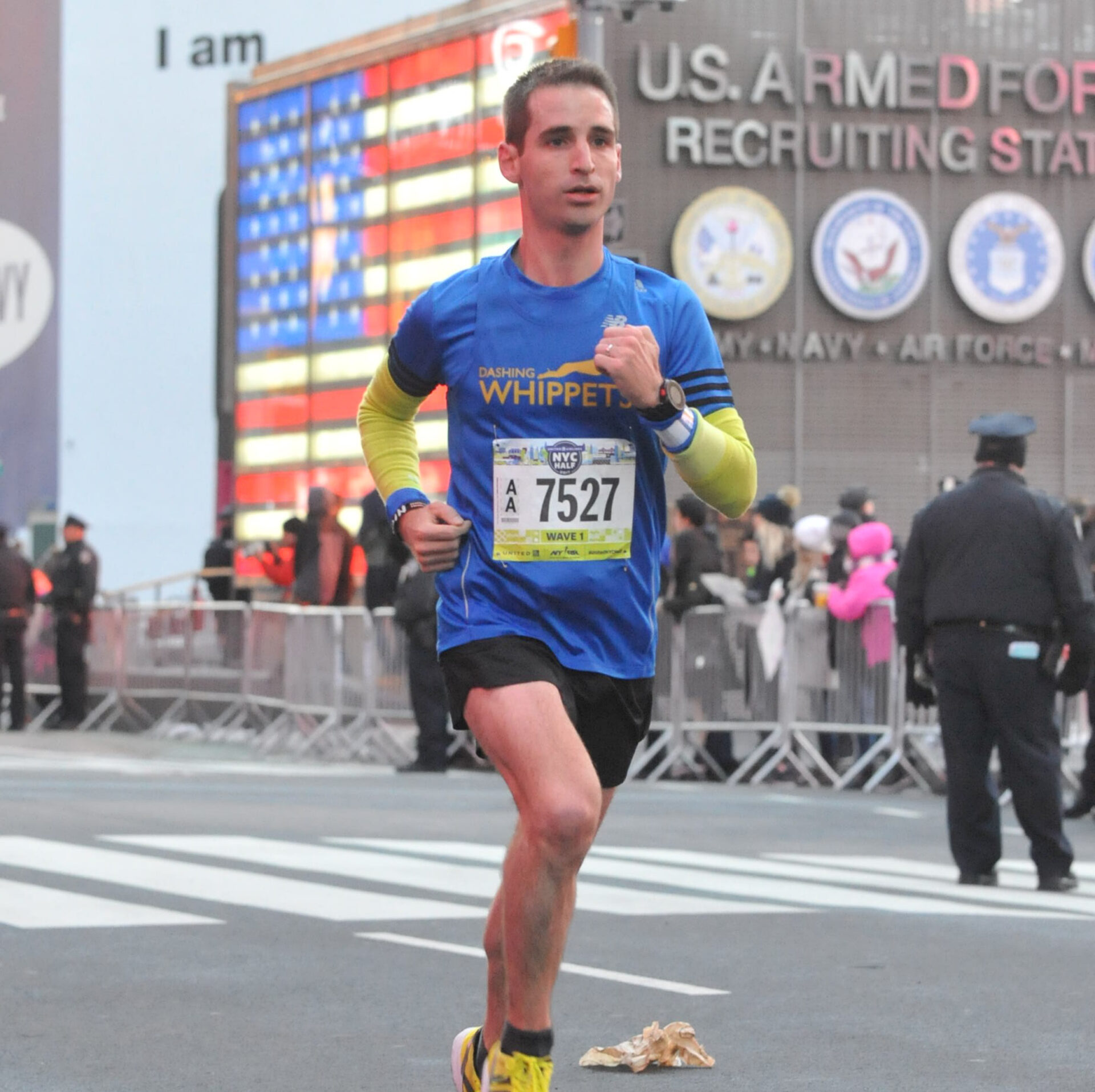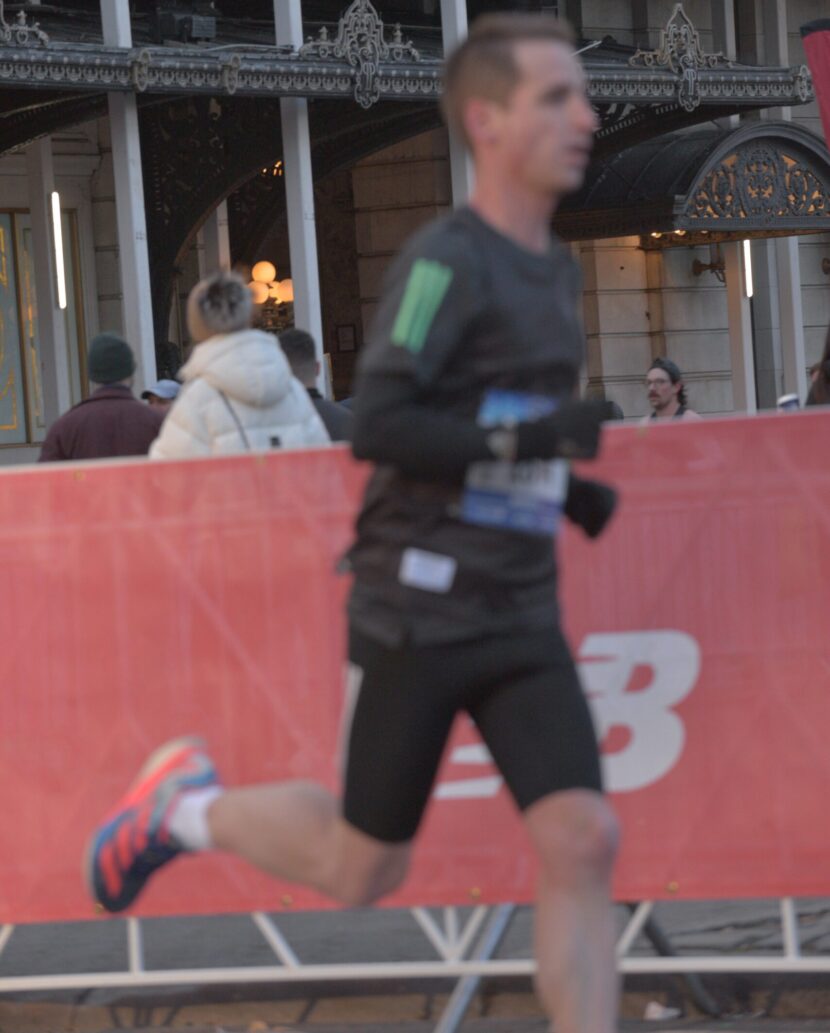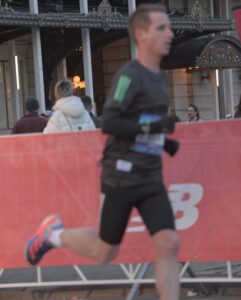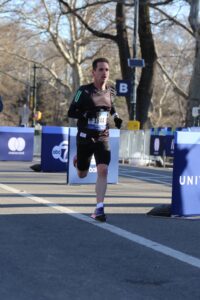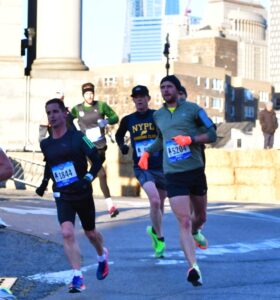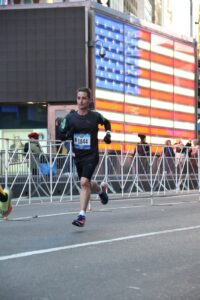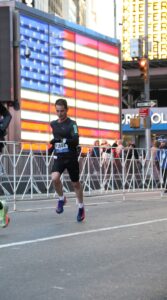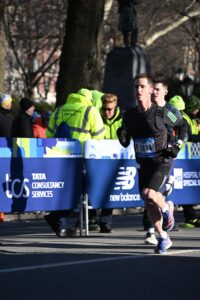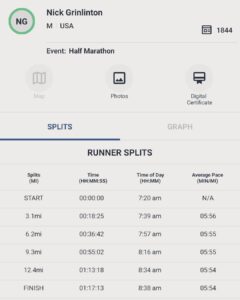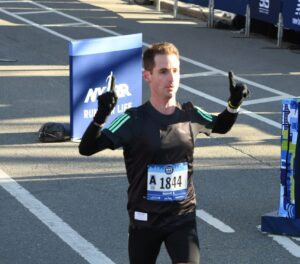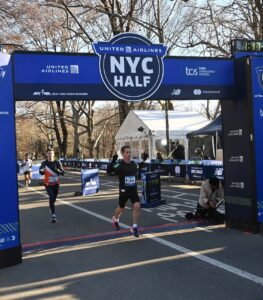For my first race of 2023, I decided to run this year’s edition of the NYC Half. I’ve always had solid performances at this event. It’s where I set my personal best in 2017. It also served as the introduction for my first half marathon experience in 2015. Only one question mark though, I had never run on the new, harder, course.
It’s common to hear that runners who do well in NYC often come from a strong cross country background. It always makes me wonder had I found running in high school, if I would have run stronger in cross country or track. Nevertheless, I’m used to running here and staying in control to run my own race. I’ve been putting in a strong base of mileage since the start of the year and had already run over 700 miles before this event. This half sort of snuck up on me as I finally arrived at starting quality workouts from developing a bigger aerobic base. I knew I could run 5:50 miles on the day, so I gave myself the goal of running somewhere around 1:16 to see my level of fitness.
I’ve also been experimenting with nutrition and fueling, as my main goal this year is to set a personal best at the NYC Marathon this November. Fueling for the marathon is paramount and the half is no exception. I began to carb load three days out. I found that taking Maurten 320 drink mix 12 hours out for the race worked well for me, as it allowed my stomach to settle. I ate a simple breakfast three hours out, took a Generation UCAN super starch gel 45 minutes out, then a Maurten Gel 100 right before the gun went off. I never had to stop for water or fuel during the event. I felt full and didn’t have any stomach problems on the course.
I woke up around 4:30. During the winter months especially, I have a really hard time waking up super early in the dark and cold. It’s really hard for me to leave the house. I pinned on my bib to my singlet pondering why nobody has invented a method for bibs to stick on clothing yet. I left the house and my body felt good during my two mile warmup to Prospect Park. I’m glad I completed my warmup routine with strides right before I entered my corral because of the limited space and crowdedness. The start never ceases to entertain me. One gentlemen accidentally took the clear plastic bag for trash to use as his own personal heat sheet. Then, slower runners I believe from NYPD and FDNY, lined up in front of my corral. Trouble, I thought.
7:20 am: the gun went off. I said out loud, “This is going to be interesting. Really NYRR, who thought this was a good idea?” Sure enough, all the runners in my corral were trying to push ahead of the runners in front. Unfortunately, it involved some pushing and shoving, but fortunately nobody fell down. After 100 meters, I settled into my rhythm, even after the awkward start. It felt crisp outside, but the wind wouldn’t introduce itself until after leaving Prospect Park to head up Flatbush Ave to the Manhattan Bridge. Surprisingly, the GPS on my watch didn’t track too far off, though I always set the auto lap function off and monitor when I cross each 5k point. Pro tip: make a custom pace band to wear on race day.
After the first 5k, I passed my house and saw my family cheering. This gave me motivation to tackle the first challenge: the incline on the Manhattan Bridge. Usually, this isn’t such an ordeal since I run hills during my training, but the cold wind coming from the side and the front made it tough. Even with the change of rhythm and the weather conditions, I kept running my target time of 1:16. Heading up the FDR drive, I found a solid group to run with, as I kept pushing the pace; trying to close a gap with another group in front. As I turned off the FDR to 42nd street, I experienced the hardest part of my race.
Before turning onto Times Square, I needed to make up time. Even though I lost seconds during the crosstown segment, I didn’t slow too dramatically. As I approached Times Square to enter Central Park, I had speed left in the tank. The final part of the course reminded me of the Abbott Dash 5k. So, I channeled my 5k racing strength and pushed through the Central Park hills. As I approached 400 meters to go, I sprinted as hard as I could, crossing the finish line in 1:17:13 for a average pace of 5:54 per mile for the day.
Surprisingly, I had run evenly for all the changes of rhythm on the course. To my surprise, I negative split the race. Overall, I thought the race went well. If anything, I think this experience with running this course will pay dividends for when I run the NYC Marathon in November. My key takeaway from the experience is to trust the plan and run a smart race. Run with confidence, run in the moment and don’t worry about any distractions that occur on the course.
Next up, the NYRR Brooklyn Half in May.
